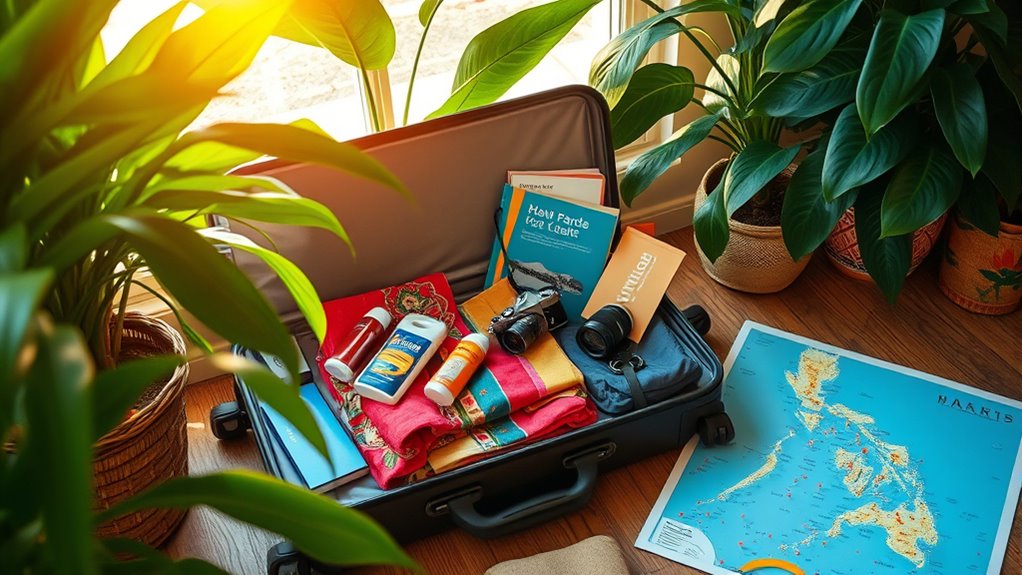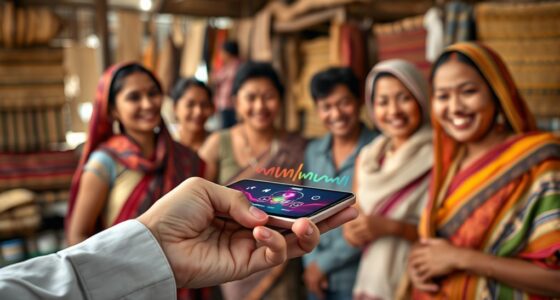To prepare for a long-term visit to the Philippines, first, check if you need a visa and choose the right type. Next, explore accommodation options that fit your budget. Don’t forget to look into healthcare and insurance, especially if you’re staying long-term. Plan your finances carefully, keep safety in mind, and adapt to local culture and cuisine. There’s so much more to discover about making your stay comfortable and enjoyable.
Key Takeaways
- Determine if a visa is required for your nationality and apply for the appropriate visa type in advance.
- Research accommodation options based on your budget, choosing between urban and beachfront locations.
- Enroll in PhilHealth for basic healthcare services and consider private health insurance for better access to care.
- Create a financial plan, including a budget and local bank account, to manage expenses efficiently.
- Stay informed about safety precautions and regional risks to ensure a secure living environment.
Visa Requirements and Application Process
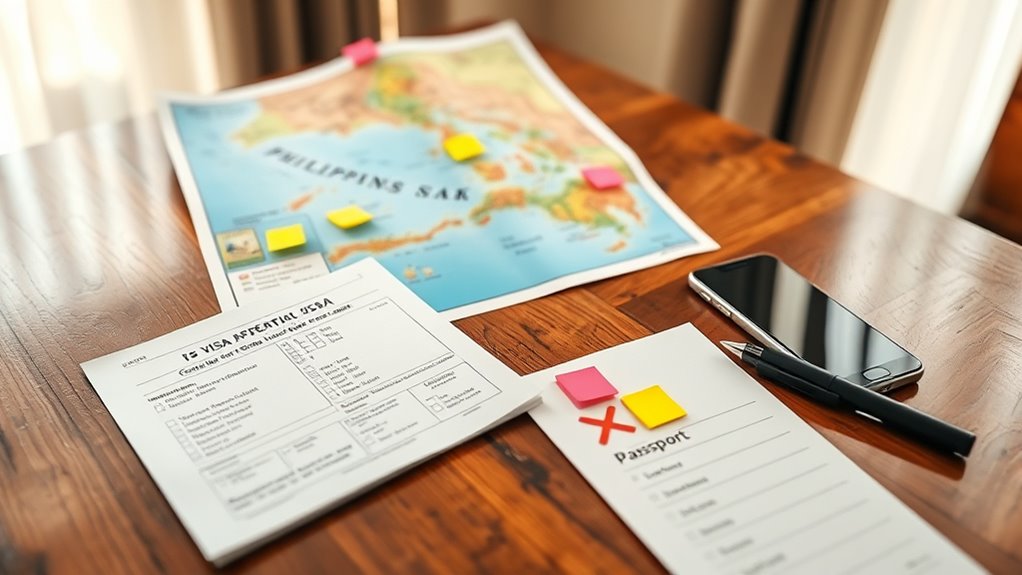
When preparing for your visit to the Philippines, it’s essential to understand the visa requirements and application process, especially since these can vary based on your nationality and the purpose of your stay.
Start by determining if you need a visa; some nationalities enjoy visa-free entry. Once you know your requirements, choose the appropriate visa type—options include tourist, business, student, retirement, or spouse visas.
Compile necessary documents like your passport and financial proof, and submit your application to the nearest Philippine embassy or consulate, along with the required fees.
Keep in mind that processing times vary, so it’s wise to apply well in advance to avoid any travel delays. Adhering to these steps guarantees a smoother entry into the country.
Accommodation and Housing Options
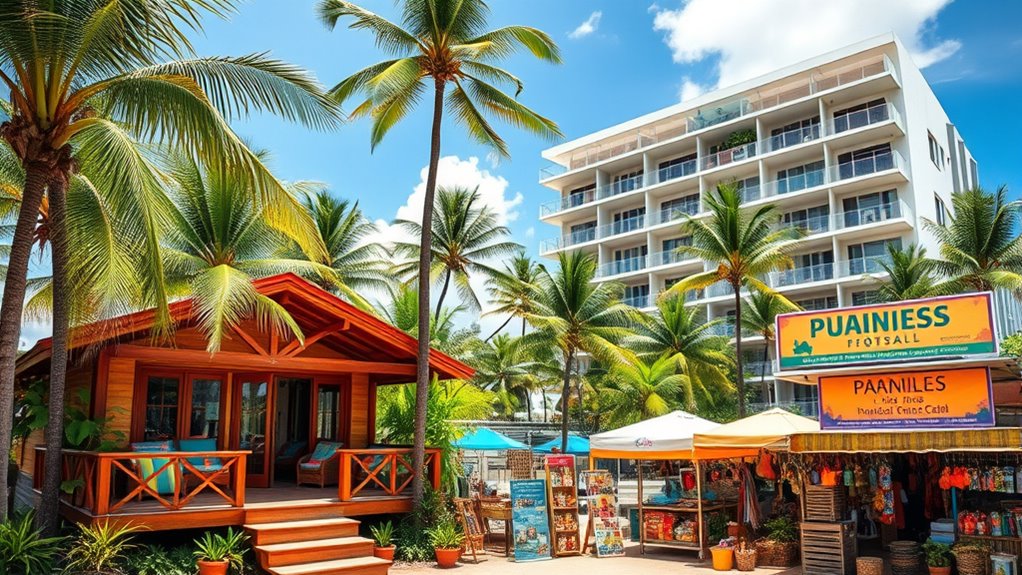
As you plan your visit to the Philippines, exploring accommodation and housing options is essential to guarantee a comfortable stay.
You can choose from various options, including apartments, condos, houses, and villas. Urban areas like Makati or Cebu offer modern condos with amenities, while beachfront locations like Boracay provide a tranquil lifestyle.
If you prefer more space, consider suburban houses or villas. For short-term stays, serviced apartments and Airbnbs are great choices.
Rental costs vary; expect to pay between Php 10,000-40,000 monthly, depending on the size and location.
Rental prices in the Philippines range from Php 10,000 to 40,000 monthly, influenced by size and location.
Remember to book in advance, especially during peak seasons, and be prepared to negotiate lease terms while ensuring you understand local regulations.
Healthcare and Insurance Considerations

How do you guarantee you’re prepared for healthcare needs during your visit to the Philippines? First, consider enrolling in PhilHealth if you have legal residency. This public health insurance offers basic services at low rates.
If you prefer better quality care, especially in urban areas like Manila and Cebu, look into private healthcare facilities. Many expats opt for private health insurance to cover additional services and provide quicker access to care.
Be aware that private hospitals might require upfront payments, so check if your insurance has direct billing arrangements.
Finally, familiarize yourself with local healthcare costs and coverage options to avoid surprises. Doing this will guarantee you’re well-prepared for any health concerns during your stay.
Financial Planning and Banking
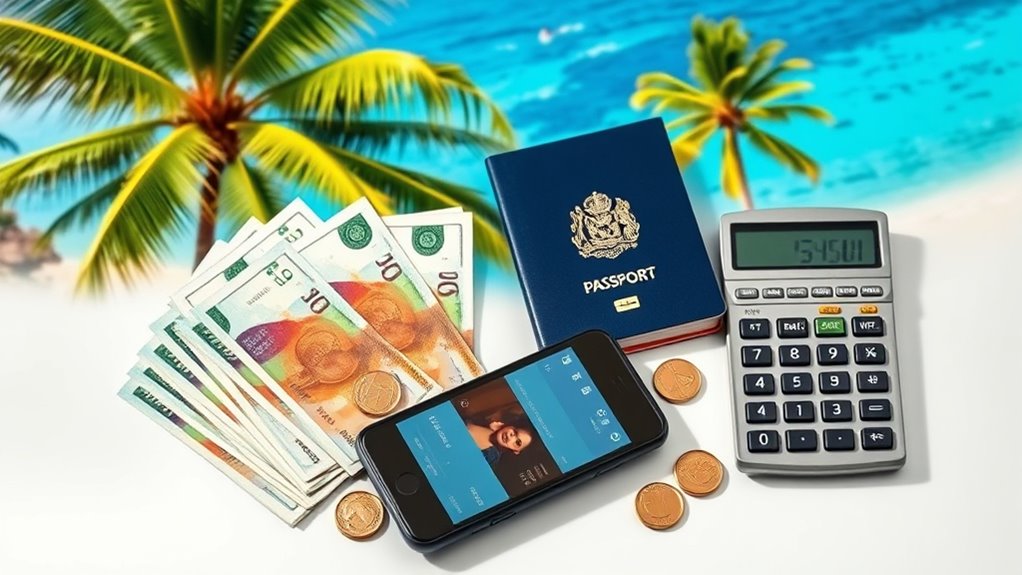
To guarantee a smooth and enjoyable visit to the Philippines, it’s essential to prioritize financial planning and banking.
Start by evaluating your financial situation: list your assets, document your liabilities, and calculate your net worth. Create a budget to track your income and expenses while setting specific savings goals for your trip.
Open a local bank account to manage your finances efficiently, and get local ATM and debit cards for easy transactions. Be aware of international ATM fees and consider using mobile banking apps for convenience.
If you’re interested in investing, explore opportunities in the Philippine Stock Exchange or mutual funds.
Finally, consult a financial advisor for tailored strategies to guarantee your financial health during your stay.
Cultural Adaptation and Language Skills
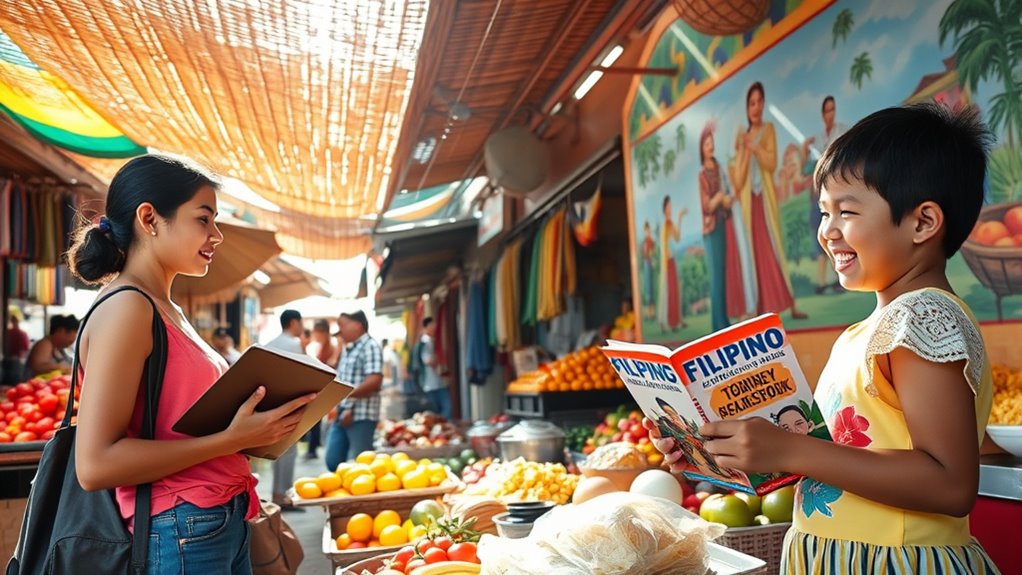
While English is widely spoken, learning basic Tagalog phrases can enhance your interactions and demonstrate respect.
Familiarize yourself with regional dialects and recognize nonverbal cues to navigate conversations smoothly.
Using local slang can help you connect with locals and integrate into social circles.
Transportation and Mobility Solutions

Understanding the local culture and language can considerably enhance your travel experience, but knowing how to get around is equally important.
Understanding the local culture enriches your travels, but mastering transportation is key to exploring with ease.
The Philippines boasts a variety of transportation options, primarily relying on road systems that connect major cities and smaller towns. You’ll find public utility vehicles, buses, and jeepneys as common modes of transport, though modernization is underway.
Metro Manila has a robust network, with taxis and light rail systems for efficient urban travel. Keep an eye on future developments like bus rapid transit and electric vehicles aimed at reducing congestion and environmental impact.
Embrace alternative modes such as walking or cycling to complement your journey, ensuring you navigate the islands with ease and sustainability.
Safety and Security Measures

When traveling in the Philippines, being aware of safety and security measures is vital for a smooth experience. High rates of crime, particularly in urban areas like Metro Manila, make vigilance important.
Avoid displaying wealth, and secure your belongings to deter petty crimes like pickpocketing. It’s wise to carry little cash and keep valuables hidden. If confronted in a robbery, resist the urge to fight back.
Always adhere to health guidelines, make certain your vaccinations are up-to-date, and drink bottled water. Register with local authorities if you stay longer than 59 days, and keep copies of important documents handy.
Stay informed about regional safety risks, particularly in areas like the Sulu Archipelago, to guarantee your safety while exploring.
Local Cuisine and Dining Experiences
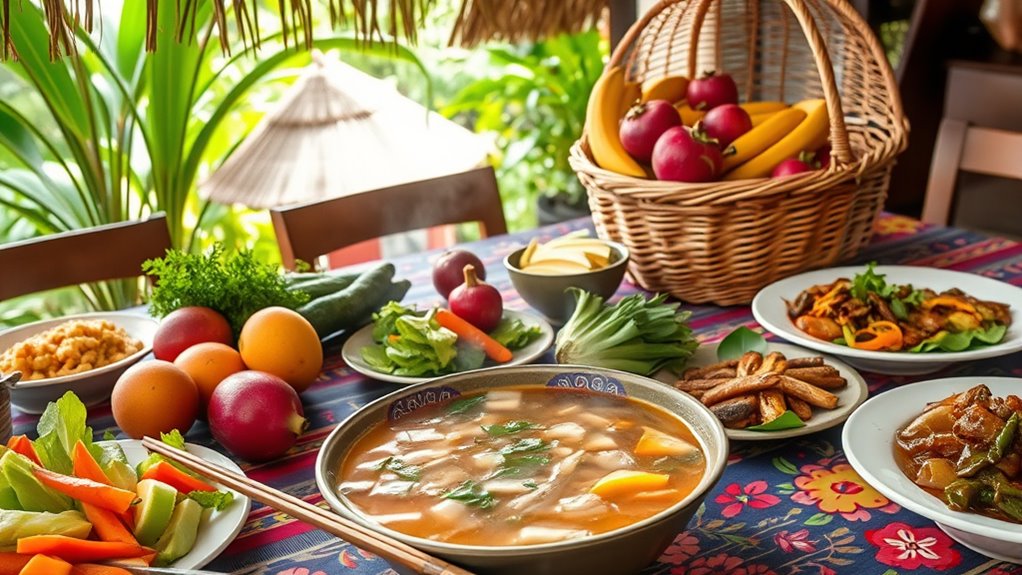
Have you ever wondered what makes Filipino cuisine so unique? It’s a delightful mix of flavors influenced by Malay, Spanish, Chinese, and American cultures.
Rice is a staple at every meal, and dining often revolves around communal sharing of multiple courses. You’ll want to try iconic dishes like lechon, sinigang, and pancit.
Rice takes center stage in Filipino meals, celebrated through communal feasts featuring beloved dishes like lechon, sinigang, and pancit.
Don’t miss out on street food; it’s an essential part of the local experience. As you dine, remember traditional etiquette—wait for elders to start the meal and feel free to use your hands!
Whether you’re at an upscale restaurant or a local eatery, each experience will deepen your appreciation for the vibrant culinary landscape of the Philippines. Enjoy every bite!
Frequently Asked Questions
What Are the Best Times of Year to Visit the Philippines?
The best times to visit the Philippines are during the dry season, from November to May, when you’ll enjoy cooler temperatures and less humidity.
For outdoor activities, the months from December to February are particularly ideal.
If you’re into festivals, March’s Panagbenga Festival in Baguio is a must-see.
January to April is perfect for water sports due to clear waters, while hiking and city tours are best experienced during the dry season.
How Can I Make Local Friends While Living in the Philippines?
Making local friends in the Philippines is like planting seeds in fertile soil; with patience and care, they’ll grow into lasting connections.
Immerse yourself in local festivals, join community activities, and learn a few Tagalog phrases to break the ice.
Attend gatherings and volunteer for projects to show you’re invested.
Don’t hesitate to smile and engage in conversations—people appreciate genuine interest.
Your openness will turn acquaintances into friends faster than you can imagine!
Are There Specific Cultural Etiquette Practices I Should Know?
When you engage with Filipinos, it’s essential to observe specific etiquette practices.
Modest dressing shows respect, and using polite language like “po” and “opo” honors elders.
Be prepared to share communal spaces and avoid swearing, as it can harm your reputation.
When visiting homes, remove your shoes, accept refreshments graciously, and compliment your host.
Embrace the relaxed approach to time, but remember to be punctual for formal events.
What Activities Are Popular Among Expatriates in the Philippines?
Expatriates in the Philippines enjoy a variety of activities that help them connect with the local culture and each other.
You’ll find them socializing at cultural festivals like Sinulog, trying traditional dishes, or participating in local events.
Many love beach activities in Boracay, snorkeling, and exploring historical sites.
Joining expat organizations or international schools can also expand your network, while outdoor adventures like island hopping and hiking offer unforgettable experiences.
How Can I Stay Connected With Family Back Home?
Staying connected with family is like weaving a strong thread between hearts. You’ve got plenty of options to keep those ties tight.
Consider using apps like TawagPinas for affordable international calls, or KeepCalling plans for subscription-based services. If you prefer mobile plans, Tello offers free calls to many countries.
Don’t forget Wi-Fi calling for stable connections! With these tools, you’ll bridge the distance and keep your loved ones close, no matter the miles.
Conclusion
As you pack your bags for the Philippines, don’t forget to leave behind any preconceived notions of paradise. You might imagine sun-soaked beaches and vibrant markets, but be ready for the unexpected—like maneuvering through the bustling streets or deciphering a menu filled with dishes you can’t pronounce. Embrace the chaos and charm, and you’ll find that every challenge unfolds into a colorful adventure. After all, who needs a guidebook when life itself is the best teacher?
